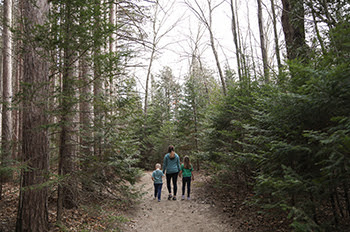Emerald Ash Borer Impacts Woods Along Ohio Boardwalk
FINDLAY, OH – To ensure the safety of visitors, dead trees will be removed along the popular boardwalk at Magee Marsh Wildlife Area, according to the Ohio Department of Natural Resources’ (ODNR) Division of Wildlife. Only trees that are in danger of falling on the boardwalk, walking trails and parking lot will be removed.
Most of the dead and dying trees are ash trees that have been attacked by the non-native Emerald Ash Borer (EAB), which is an insect native to Asia that was detected in Michigan in 2002. Since 2002, EAB has spread to Ohio and other states. The ash borer has been responsible for killing millions of ash trees in the Midwest, and there is no large-scale method to control the borer at this time.
Wildlife area staff will only be removing trees that are in imminent danger of falling. Additional trees are marked as well; however, there are no plans to remove these trees at this time. These trees have been marked so wildlife area staff can monitor their status over the next five years and determine if they have become a hazard.
ODNR’s Division of Wildlife will allow natural tree regeneration to replace the ash trees. The tree species which will likely colonize the site are: cottonwood, box elder, Kentucky coffeetree and hackberry.
The Magee Marsh Boardwalk is listed as one of the ‘Top 10 Birding Locations in North America’ and will be visited by tens of thousands of bird watchers and millions of birds in the spring. Removing the hazardous trees is the most responsible action the Division of Wildlife can take to ensure a safe environment for the visitors at the boardwalk.
The death of the ash trees due to the non-native EAB is a reminder of the consequences exotic species can inflict on the habitats of native wildlife and plant species. EAB can become established when infested firewood is transported to new areas. People are encouraged to help stop the movement of exotic pests by not moving firewood.







